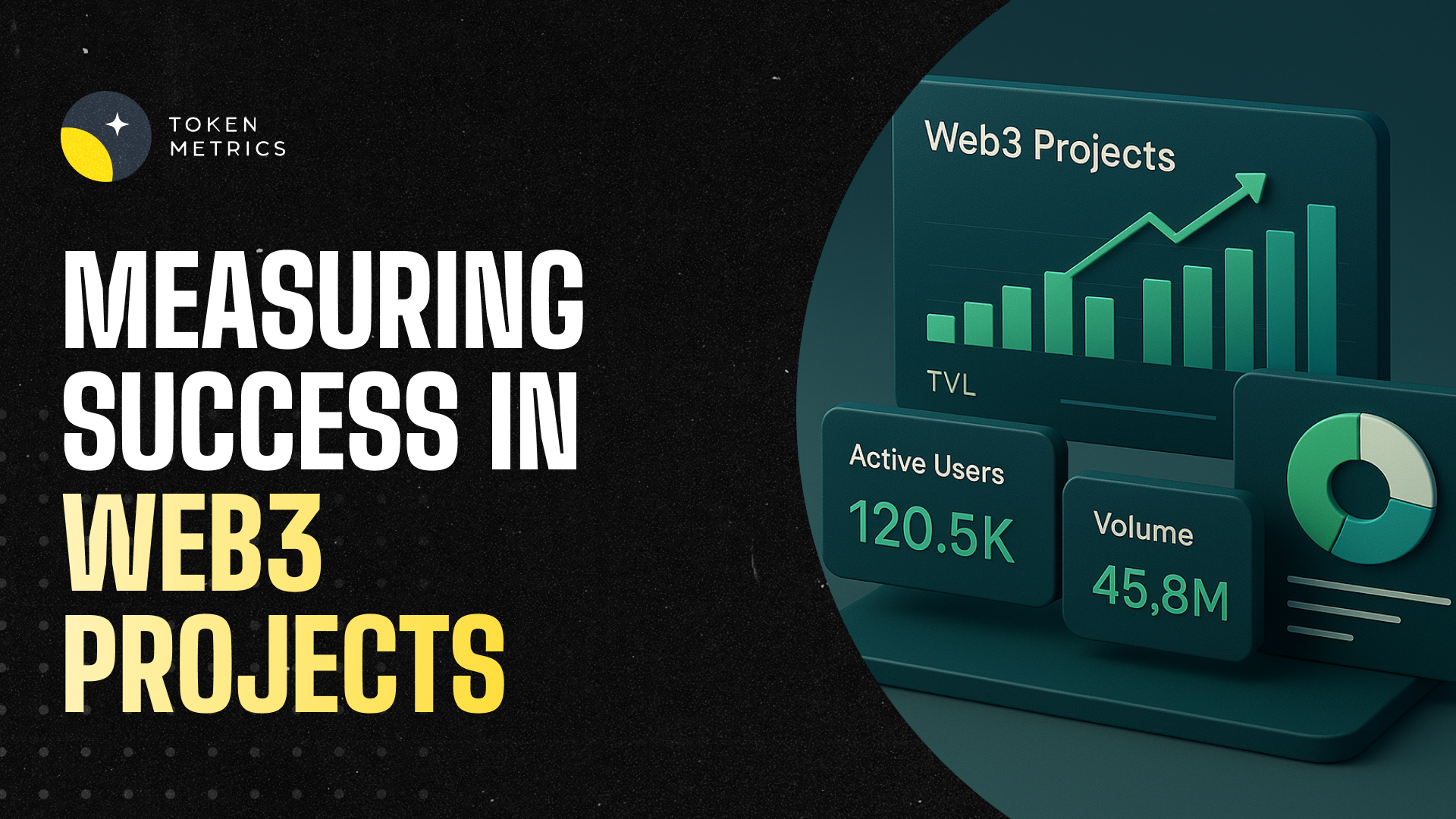
What Are Trading Fees and How Do They Work?

If you’ve ever bought or sold cryptocurrency, you’ve likely noticed that exchanges charge trading fees. While these fees may seem small at first glance, they can add up significantly over time, especially for frequent traders.
Understanding how trading fees work is essential for maximizing your profits and choosing the right platform and strategy. In this guide, we’ll explain what trading fees are, how they’re calculated, the different types of fees, and how Token Metrics can help you minimize costs while optimizing your trades.
What Are Trading Fees?
Trading fees are charges imposed by cryptocurrency exchanges whenever you execute a trade—whether you’re buying, selling, or swapping digital assets.
- Purpose:
- They compensate exchanges for providing liquidity, security, and order-matching services.
- They discourage spam orders that could overload the exchange.
- They compensate exchanges for providing liquidity, security, and order-matching services.
Example:
If you buy $1,000 worth of Bitcoin with a 0.1% trading fee, you’ll pay $1 in fees for that transaction.
How Are Trading Fees Calculated?
Most crypto exchanges calculate fees based on:
- Trade Value (Percentage):
- The most common model.
- Fees are a percentage of the total trade amount (e.g., 0.1% per trade).
- The most common model.
- Flat Fees:
- Some platforms charge a fixed fee per trade, regardless of trade size.
- Some platforms charge a fixed fee per trade, regardless of trade size.
- Tiered Fee Structures:
- Frequent traders often benefit from lower fees when they reach certain monthly trading volumes.
- Frequent traders often benefit from lower fees when they reach certain monthly trading volumes.
Maker vs. Taker Fees
Many exchanges use a maker-taker model to incentivize liquidity:
- Maker Fees:
- You pay a lower fee (or sometimes nothing) when you add liquidity by placing a limit order that isn’t immediately matched.
- You pay a lower fee (or sometimes nothing) when you add liquidity by placing a limit order that isn’t immediately matched.
- Taker Fees:
- You pay a higher fee when you remove liquidity by placing a market order that is filled instantly.
- You pay a higher fee when you remove liquidity by placing a market order that is filled instantly.
Example:
On Binance, makers might pay 0.08%, while takers pay 0.1%.
Types of Crypto Trading Fees
When trading crypto, you’ll encounter more than just trading fees:
1. Trading (Transaction) Fees
- Charged when buying or selling crypto.
- Often range from 0.05%–0.5% depending on the exchange.
2. Deposit Fees
- Some exchanges charge when funding accounts via credit card, PayPal, or bank transfers.
- Crypto deposits are typically free.
3. Withdrawal Fees
- Charged when moving funds off the exchange.
- Often fixed per withdrawal (e.g., 0.0005 BTC).
4. Network (Gas) Fees
- Separate from exchange fees, paid to blockchain validators.
- Ethereum and other networks can have high gas fees during peak demand.
Why Do Trading Fees Matter?
Even small fees can significantly impact your profits, especially if you trade often.
Example:
- A day trader making 50 trades/month with a 0.1% fee per trade on $1,000 positions will pay $50/month in fees.
- Over a year, that’s $600 lost to fees—before considering withdrawal or gas costs.
This is why reducing fees is crucial for active traders.
How to Minimize Trading Fees
1. Use Low-Fee Exchanges
Compare platforms—Binance, Bybit, and Kraken often offer competitive rates for high-volume traders.
2. Increase Your Trading Volume
Many exchanges lower fees as your monthly trading volume increases.
3. Use Limit Orders
Save on fees by acting as a maker instead of a taker whenever possible.
4. Pay with Exchange Tokens
Some exchanges offer discounts when fees are paid with their native token (e.g., BNB on Binance).
5. Optimize Your Trading Strategy with AI
Instead of making dozens of small trades, use data-driven insights from Token Metrics to make high-probability trades—reducing overall fee impact.
How Token Metrics Helps You Save on Fees
Token Metrics isn’t an exchange—it’s an AI-powered crypto research and trading platform designed to maximize your profits.
Here’s how it helps with trading fees:
1. AI-Powered Trade Optimization
Token Metrics provides bullish/bearish trading signals based on 80+ technical indicators, helping you enter fewer but higher-quality trades—minimizing unnecessary fees.
2. Trader & Investor Grades
Our proprietary grading system helps you identify top-performing cryptos, reducing guesswork and avoiding costly trial-and-error trading.
3. AI-Managed Indices
Instead of manually rebalancing portfolios (and paying multiple trading fees), use Token Metrics AI-driven crypto indices, which rebalance intelligently while keeping transaction costs low.
4. Narrative Tracking
Our AI detects emerging crypto narratives early, helping you position yourself before the market gets crowded—reducing the need for excessive short-term trading.
Practical Example: Using Token Metrics to Reduce Fees
Imagine you’re trading altcoins manually and make 20 trades/month.
- At 0.2% per trade on $1,000 positions, you pay $40/month in fees.
- With Token Metrics AI signals, you cut this down to 8 high-probability trades per month—reducing your fees by 60% while increasing win rates.
This is how data-driven trading saves both money and stress.
Final Thoughts
So, what are trading fees and how do they work? They’re the charges exchanges take for facilitating trades, withdrawals, and transactions—and while they may seem small, they can eat into your profits quickly.
The good news? You can minimize trading fees with the right strategies—and Token Metrics can help.
By providing AI-powered trading signals, long-term Investor Grades, and automated crypto indices, Token Metrics helps you reduce unnecessary trades, make smarter decisions, and maximize your returns—all while minimizing the impact of trading fees.
Whether you’re a beginner or advanced trader, using Token Metrics means trading smarter, not harder.

.svg)

Create Your Free Token Metrics Account

.png)




%201.svg)
%201.svg)


%201.svg)









.svg)




.png)